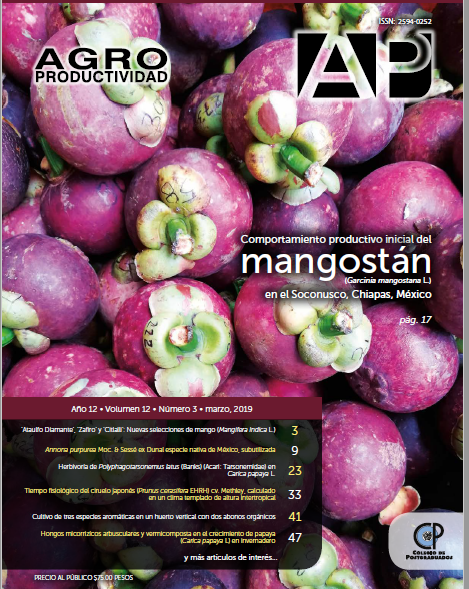Collection, establishment and characterization of castor bean (Ricinus communis L.) in the central-northern plateau of Mexico
Main Article Content
Keywords
Ricinus communis, seed collection, seed characterization, bioenergy crops
Abstract
Objective: To evaluate growth, development, yield and characterization of the seed produced by 20 seed collections of castor bean gathered from Aguascalientes, Jalisco, San Luis Potosí and Zacatecas, Mexico.
Design/methodology/approach: Seed collected in each site was extracted and cleaned; then, the average size and weight were measured, and color was determined. Seeds were sown in bags, registering the days to emergence; when seedlings reached a 15-cm average height, they were transplanted to a plot in the community of Diego Martín, municipality of Salinas, San Luis Potosí, Mexico.
Results: The average number of clusters per plant was 26.8, and the average height of the plant was 2.95 m. Regarding the weight of 100 seeds, the average was 18.6 g, with a maximum value of 46.1 g for the seed collected at Salinas de Hidalgo, San Luis Potosí, which also presented the longest seed (15.7 mm). The most frequent background color of seed was gray, with dark brown spots on top. Concerning seedling emergence, the collected seeds called Francia Chica (100%) and Villa Hidalgo (94%) stood out.
Limitations on study/implications: Wild plants commonly present a wide genetic variability, which makes necessary long-term studies to get more stable seed lines.
Findings/conclusions: Seed collected in Salinas de Hidalgo, San Luis Potosí, excelled in some parameters such as size, weight and emergence.

